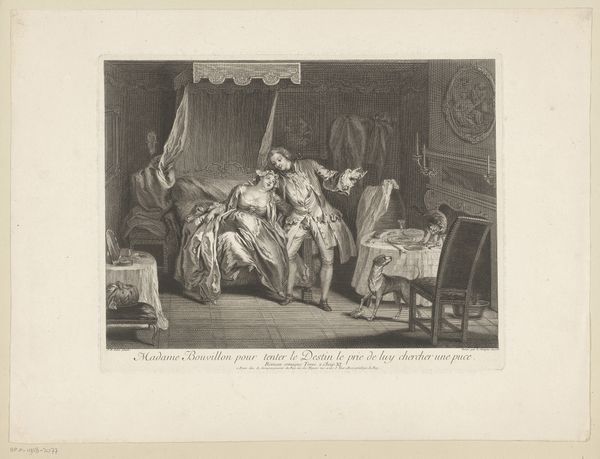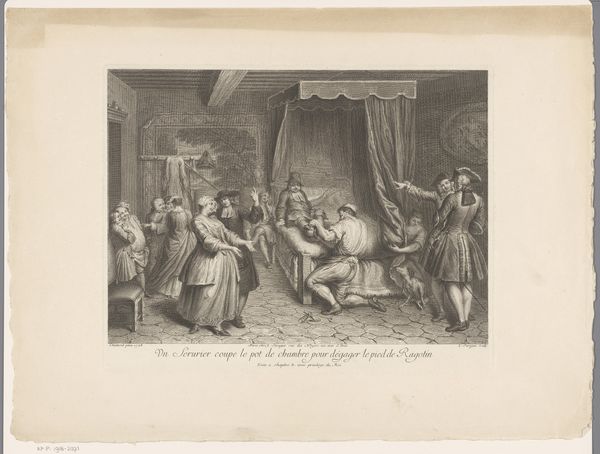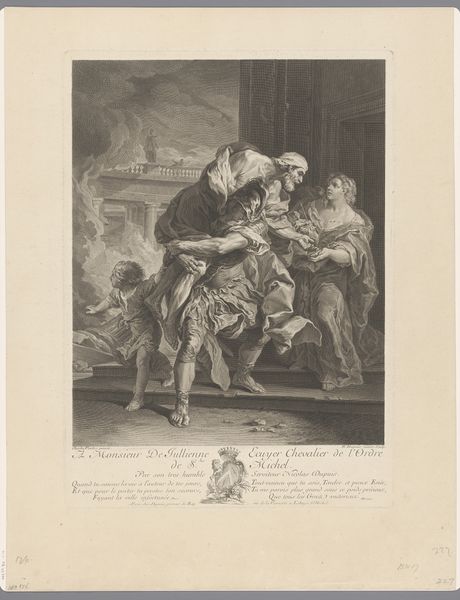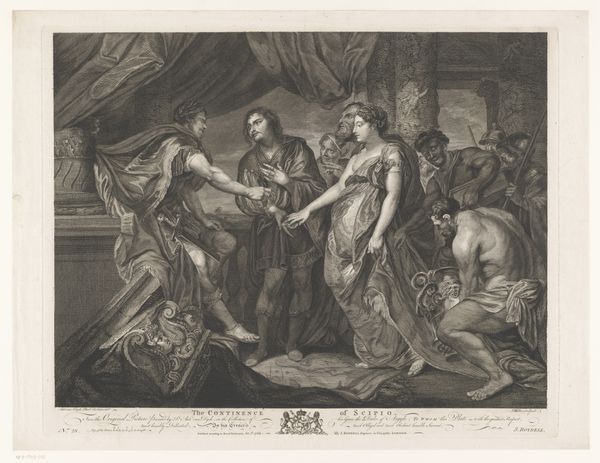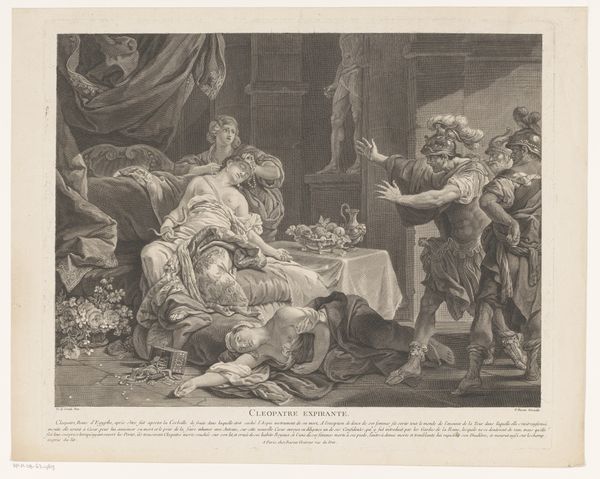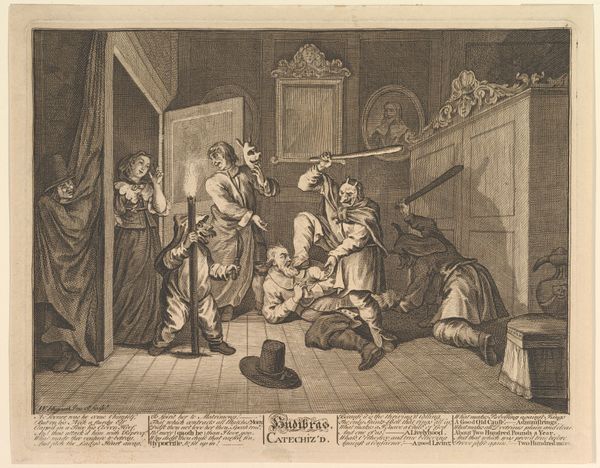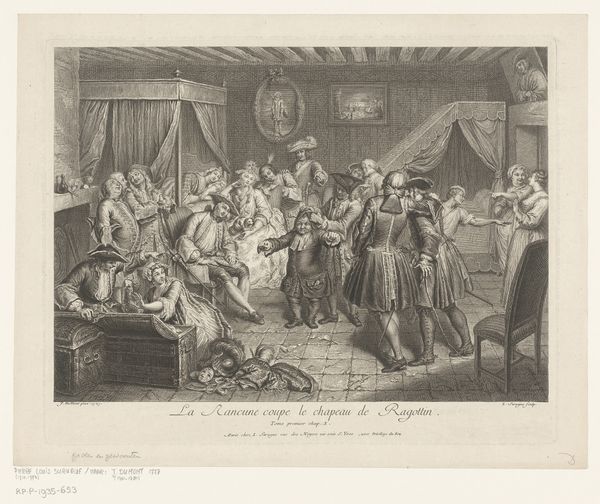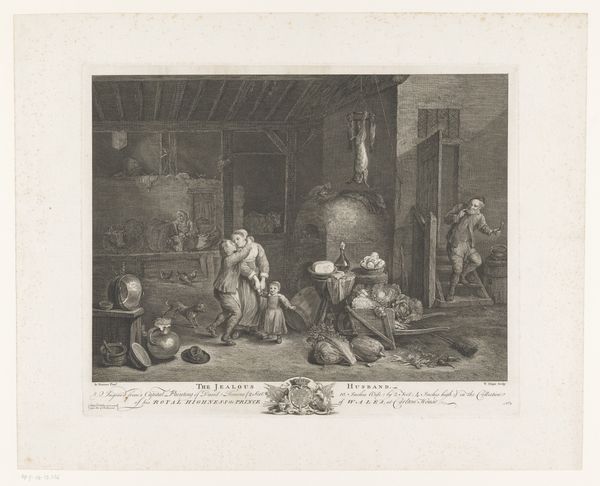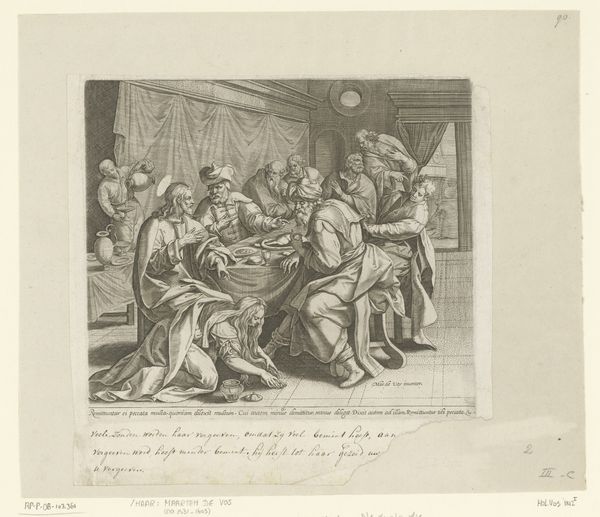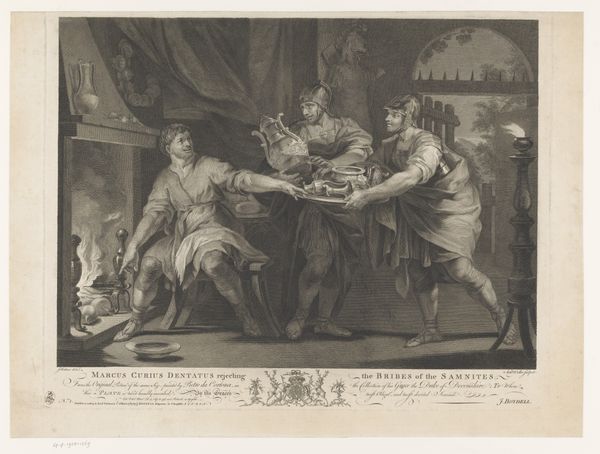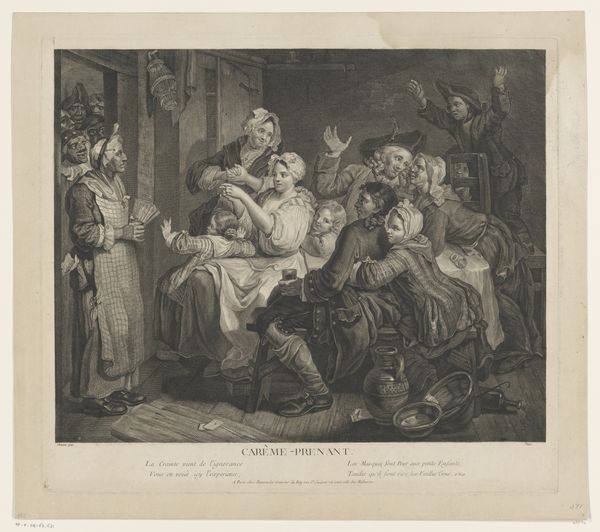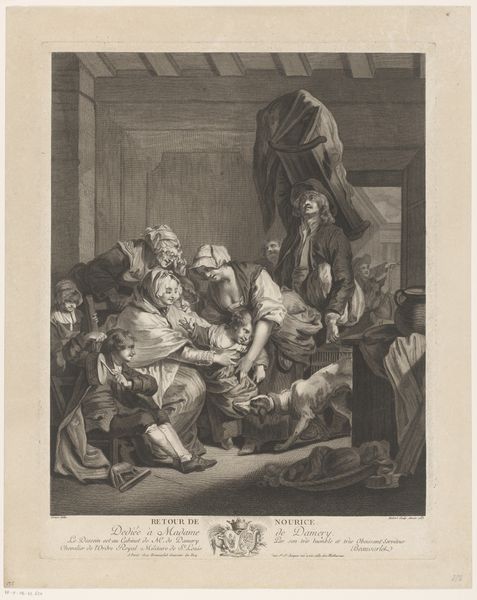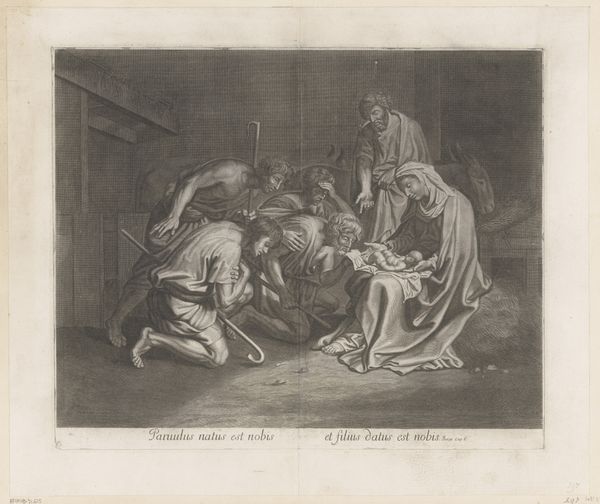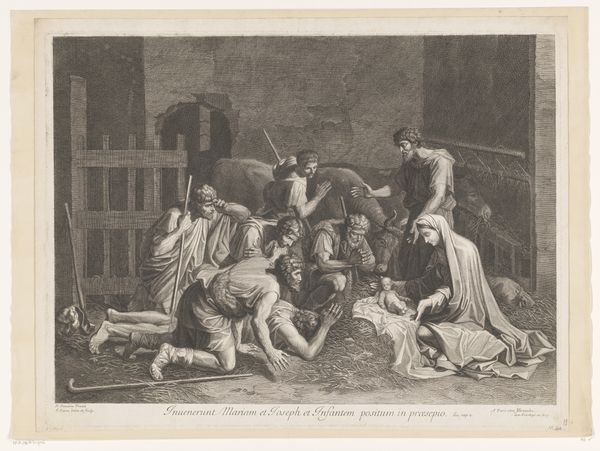
Dimensions: height 556 mm, width 662 mm
Copyright: Rijks Museum: Open Domain
Editor: So, here we have "Ruzie tussen vader en zoon," or "Quarrel between Father and Son," an engraving from around 1777-1790, made by René Gaillard. It’s a chaotic scene! What I find striking is the number of figures and their gestures—they are very expressive. How do you interpret this work, focusing on the materiality and production? Curator: Well, first, look at the *means* of production: engraving. This allowed for wider dissemination of images and ideas during the late 18th century. The very *process* of creating multiple copies democratized art, in a sense, making it more accessible. Consider the paper itself, a common, everyday material chosen as the support. What kind of social statement might it be making, do you think? Editor: Maybe that domestic conflict, even something this dramatic, is actually very *commonplace*, like the material itself? This isn't some grand oil painting commissioned by royalty. Curator: Precisely! It's a printed image meant for relatively broad consumption. Think about the *labor* involved in making such a detailed engraving, the artisan meticulously etching the metal plate, each line carefully considered. That labor connects to the depicted social class in the scene, don't you think? Note that it's *not* royalty here; these are definitely middle-class people. How do the gestures reinforce that impression? Editor: You're right, their clothing isn’t extravagant, and the interior setting looks fairly modest. All those outstretched arms suggest emotional turmoil, yet… domestic. I guess that means these heightened feelings can happen in ordinary environments with mundane materials like textiles and wood? Curator: Indeed. By focusing on the material and its means of production we challenge notions about art’s status in culture by appreciating these aspects and viewing it outside a specific high or low category, connecting it directly to everyday life. It becomes a document reflecting the social dynamics and economic realities of the period. Editor: I never thought of it that way. Now I understand the work more holistically by exploring beyond the obvious drama. Thank you!
Comments
No comments
Be the first to comment and join the conversation on the ultimate creative platform.
